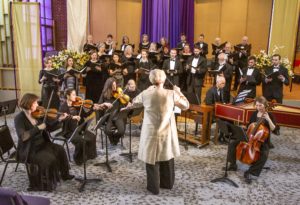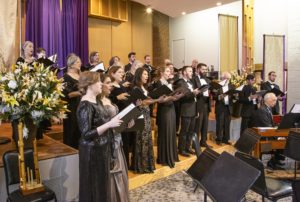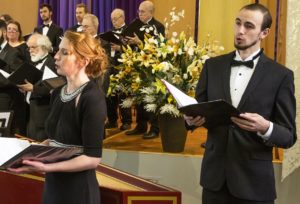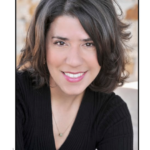Seicento Baroque Courts Audience with a Royal Tour
A review by Betsy Schwarm
Many ensembles make their mark in part by focusing on the music of the Baroque. Seicento Baroque Ensemble goes one step further, drawing its repertoire largely from the generations preceding the almighty Bach. It might seem a risky practice to build one’s programs around less familiar names. However, Seicento’s audiences have come to trust the ensemble, and last weekend’s concerts proved that faith to be well-deserved.
Seicento’s March programs were based on the theme “In Your Court: A Royal Tour.” Given that subject and the century with which Seicento tends to concern itself, France stood most prominent; Louis XIV would have expected nothing less. English composers, as well as Italian, Germano-Austrian, Portuguese and even Ukrainian, also made an appearance. The blend offered intriguing contrasts, both of mood and style. It turns out that early Baroque music can be, in its own way, nearly as varied as that of later generations.
Detailed without being overly academic, artistic director Amanda Balestrieri’s program notes, as well as her live comments from the stage (she conducted most of the evening), provided useful insights, especially into those composers who might have been less immediately familiar to some audience members. Attentive nods from audience members suggested an appreciation for learning the context from which each work arose. Certainly, learning not only the meaning but also the pronunciation of “vicegerent” – note: it isn’t “vice-regent”, and the accent falls on the middle syllable – added perspective to the Purcell ode in which that word appears.
William Byrd and Henry Purcell, the program’s English composers, stand a century apart from one another: the first in Elizabethan/Jacobean times, the second in the days of Queen Anne. Byrd’s Oh Lord, Make thy Servant, Purcell’s ode Welcome Vicegerent, and scenes from Purcell’s King Arthur required careful balance between performing forces, as the music shifts between solo spotlights and choral passages. This was particularly notable in the Byrd anthem; here, Balestrieri’s forces also comfortably managed verses in which different sections of the chorus were set in contrary motion, upward moving phrases set directly against downward moving ones.
In Purcell’s ode, sopranos Mary Hannah Keith and Ekaterina Kotcherguina made pert work of summer imagery, and tenor Alex King was convincingly sweet on the theme of music as the food of love in that same work. Other featured voices in the ode were young singers new to the ensemble, and acquitted themselves exceptionally well. Especially notable of these were alto Karoline Guerin and bass Allen Adair, featured in the first duet, the generously proportioned “Ah! Mighty Sir.” Here, both in weight of voice and in technique, the two were perfectly matched. Their colleague, alto Jennifer Davis, was equally comfortable with her brief, gracefully dance-like line late in the ode, where she had the happy task of bidding all those with voices to “cheerfully sing.” That these newer voices in Seicento’s line-up were already so impressive speaks well of the ensemble’s even more experienced singers.
The Purcell King Arthur selections appearing later in the program required the same level of vocal/instrumental excellence. However, there was also the additional challenge of atmosphere, as the composer concerns himself with a pastoral vision of the old English countryside. Here, the energy was appropriately spirited, even dance-like when required.
The French portion of the program included two smaller scale sacred motets by Jean-Baptiste Lully, Italian-born, though long resident in France. Both a cappella, one featured a trio of male voices, the other a trio of women. In both, Balestrieri made a point of having the performers use the French Baroque pronunciation of the Latin texts: a nice touch of authenticity. The much grander Magnificat setting by Marc-Antoine Charpentier featured frequent shifts between choral statements, smaller ensembles, and solo passages. Here, as with the Byrd anthem heard earlier in the program, the selected soloists were nicely contrasted in vocal weight, so that (to choose a single example) Maxwell McKee’s luxuriant bass gave particular gravitas to his lines of mercy. Clearly, Balestrieri had taken care throughout the program not only to match voices of similar weight, but also to suit them to the text at hand.
Less widely familiar names on the program included Francesca Caccini, whose prologue from her court opera La liberazione di Ruggiero brought tenor Sean Stephenson into the spotlight as Neptune, a role requiring judicious application of early Baroque trills and flutters, as well as a certain almost baritonal timbre, at which Stephenson excels. King John IV of Portugal provided an a cappella setting of Crux fidelis, in which passages of smooth homophonic textures were nicely contrasted by touches of counterpoint, setting one voice part off with distinctly different material.
German-born Johann Caspar Kerll provided two offerings. The whimsical Cuckoo Capriccio was presented with just the right amount of smile-inducing humor by Gerald Holbrooke on harpsichord (in other performances of this program, organ). Much later in the program came Kerll’s Requiem æternam, its fugal textures building upward from the bass lines, burgeoning and brightening as it proceeded.
Seicento’s program concluded with Ukrainian Nikolay Diletsky’s Canticle 9 for Easter. Here, the writing is for double chorus,thus eight voice parts, rather than the more typical four, providing even greater richness and authority for the most outspoken portions of the text. Rather than being in Latin, as one might suspect of sacred motets, the text here was in Church Slavonic, the translation and pronunciation thereof thanks to soprano soloist Ekaterina Kotcherguina. Audience members thus had an opportunity to hear how generally familiar sacred ideas gain different colors in other cultures and other languages.
 The instrumental component of Seicento’s ensemble made a point of employing Baroque playing techniques: generally lighter in touch than what one might use for later composers. Most frequently this was just strings and harpsichord, appropriate in number for the repertoire. For other selections, recorders, trumpet, and even a touch of percussion provided an even more vibrant atmosphere. How, after all, could one have a peace pipe dance (Rameau’s Les Indes galantes) without a drum? Trumpeter Ryan Spencer performed only in the opening second air from Charpentier’s Marche de Triomphe. However, his deft handling of the material – characteristic of the period, though also requiring specialist technique – provided just the right amount of sparkle to get the program off to a vibrant start.
The instrumental component of Seicento’s ensemble made a point of employing Baroque playing techniques: generally lighter in touch than what one might use for later composers. Most frequently this was just strings and harpsichord, appropriate in number for the repertoire. For other selections, recorders, trumpet, and even a touch of percussion provided an even more vibrant atmosphere. How, after all, could one have a peace pipe dance (Rameau’s Les Indes galantes) without a drum? Trumpeter Ryan Spencer performed only in the opening second air from Charpentier’s Marche de Triomphe. However, his deft handling of the material – characteristic of the period, though also requiring specialist technique – provided just the right amount of sparkle to get the program off to a vibrant start.
The second of Seicento’s three performances was relocated to a new venue, due to technical problems with the originally announced facility. Located in Denver’s Highlands neighborhood, Highlands Center Hall proved well-suited to Seicento in size and acoustics. Anticipating that some patrons might be delayed due to the change of location, Balestrieri added a short spoken prologue, lest late arrivals miss any of the music. This prologue proved to be literally that: the prologue to Henry V, delivered with aplomb by John Samson, late of the vintage KVOD, “The Classical Voice of Denver.” The text perfectly suited the theme of the evening, with its royal references, and its bid to listeners “gently to hear, kindly to judge.” One might suppose that Shakespeare’s words could serve as a maxim for life, and not just for concert attendance. Certainly, the prologue put many listeners that evening in exactly the perfect mood to appreciate the program, and one hopes that fact will cause them to place Seicento Baroque Ensemble on their list of regular favorites.











